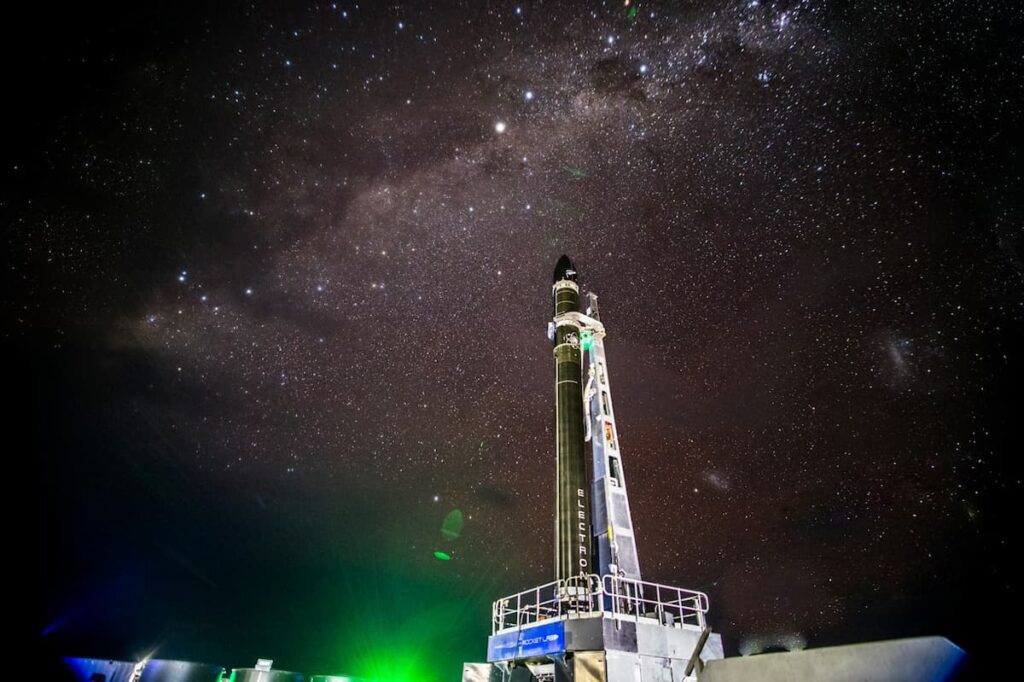Rocket Lab Launches Into NewSpace Leadership Role
Table of contents

The new space race is no longer about the United States and the Soviet Union going tit for tat in a chest-thumping contest for dominance over the pockmarked rock that orbits our planet. The rapid commercialization of space is witnessing an unprecedented emergence of private companies racing for lucrative government contracts, as well as private sector money, driven largely by a robust small satellite industry. The big three private enterprises – SpaceX, Blue Origin and Virgin Galactic – generally dominate the headlines, partly thanks to their ego-driven CEOs. So it’s not surprising that a little-known New Zealand company called Rocket Lab, with its headquarters in Los Angeles, would still be flying under the public radar despite a billion-dollar valuation that got a big boost this month with a mega-round of funding and a successful orbital launch.

Rocket Lab and Peter Beck
Founded way back in 2006, Rocket Lab closed a $140 million Series E just a few days ago, bringing its total disclosed funding to $288 million. The company said the new infusion of funds sent its valuation “soaring past its previous $1 billion-plus valuation,” set back in March 2017 after it had raised a $75 million Series D. Its backers include one of the top, not to mention oldest, venture capital firm in the United States, Bessemer Venture Partners, as well as other respectable firms like Khosla Ventures and defense giant Lockheed Martin, among other investors.
At the helm of the starship is Kiwi Peter Beck, a self-taught aerospace engineer who at age 18 famously strapped a rocket to his bicycle and launched himself 90 miles per hour down the road. You figure someone with those sorts of cojones would either kill himself in spectacular fashion or found a billion-dollar NewSpace company that in 2009 became the first private venture to launch a rocket into space from the Southern Hemisphere. He also bears an uncanny resemblance to another daring individual who once traveled long distances to a place with extreme temperatures:

But that’s only the beginning of the quest to reach space for Rocket Lab.
Rocket Lab Rocket Engines
In 2014, the startup embarked on its version of the SpaceX Falcon launch program. Dubbed Electron, the launch program focused on developing a small, lightweight rocket technology that could be mass produced cheaply. A key breakthrough is that the main engines for the launch vehicle are 3D printed, including all of the primary components of its combustor and propellant supply system. That means a lot less moving parts that can potentially fail. Other companies have jumped on the idea to use additive manufacturing – a fancier way of saying 3D printing – to build launch systems, with startup Relativity Space among the most well known.
The rocket engines themselves – the Rutherford rocket, named after the New Zealand-born British physicist, known as the father of nuclear physics – are the only ones in the world that use electrically driven propellant pumps, rather than turbomachinery. That lack of complexity lends itself particularly well to 3D printing. It also uses two propellants, a fuel mixture of highly refined kerosene and liquid oxygen. Both the first and second stages of the launch vehicle, which is made of a lightweight carbon composite material, employ Rutherford engines. The launch vehicle itself is less than 60 feet tall and can carry about 500 pounds into space. For comparison, the SpaceX Falcon 9 is about four times as tall and capable of carrying payloads of more than 50,000 pounds into low-earth orbit.
But Here’s the Kicker
Rocket Lab isn’t worried about building the biggest and baddest rocket on the market. Its focus is on the microsatellite industry, which is one of the key market drivers today in the potentially trillion-dollar NewSpace economy. That focus is reflected in the design of the launch vehicle, which includes a kick stage. The kick stage is essentially a small third stage with its own propulsion system that deploys its payloads in varying orbits based on a customer’s needs. It even sports its own specially designed (and 3D printed) rocket engine, called Curie.

While the Electron launch vehicle is not a reusable system like the SpaceX platform, Rocket Lab is doing its best to keep from cluttering up space with junk. In an interview with Beck, Space.com reported that the kick stage is capable of de-orbiting itself. The second stage also drops out of orbit quickly back to Earth, leaving only the deployed spacecraft spinning through the void around the planet. Other launch platforms do all of that work with the second stage, leaving a big chunk of junk in orbit – and without the option of being placed in a customized location.
Rocket Lab Launch Schedule and Facilities
Rocket Lab is able to accomplish all of that for about $5 million per launch versus $50 million for a SpaceX trip into orbit. The company’s goal is to launch monthly by next year and weekly by 2020. (Again, for comparison: SpaceX completed 18 trips into space in 2017 and is trending a little higher this year.) Rocket Lab currently launches out of a remote peninsula on New Zealand’s North Island where it is authorized to conduct up to 120 missions per year.

The startup just announced that a second launch complex will be built at NASA Wallops Flight Facility in Virginia. It also just completed a new mass production facility for the Electron vehicle in Auckland. Finally, Rocket Lab is also hiring, preparing to add as many as 180 new people to its roster of 330 employees, so obviously all that new money is being well spent.
It’s Business Time for Rocket Lab
And all of that work is paying off. The company successfully launched its second commercial flight – and only third overall of the Electron launch vehicle – earlier this month. The mission, dubbed “It’s Business Time” in typical Kiwi humor, deployed six satellites for customers including another well-funded startup for geospatial services and analysis called Spire Global, among other small satellite companies. Another customer is Fleet Space Technologies, an Australian startup funded to the tune of about $3.7 million that is building an Internet of Things cubesat constellation that will provide internet connectivity for millions of sensor devices based in remote locations on Earth.

The mission also involved an experiment of its own, carrying a “drag sail” designed and built by a German company that is testing the technology to help remove inactive small satellites from orbit. The idea is that the drag sail, which looks like an oversized kite, increases a space vehicle’s atmospheric drag to reduce the time spent in orbit, forcing it back into Earth’s atmosphere where it can burn up like a spliff of Stephen Hawking Kush.
Rocket Lab hopes to ride out 2018 with one final launch in December for its biggest customer to date – NASA. The mission is for NASA’s Educational Launch of Nanosatellites program, which involves teaching students about all aspects of developing, assembling and testing payloads for space missions. The most sophisticated education tool we had growing up was the board game Operation. This probably explains why we write about cool tech rather than make it.
Conclusion
The term “space race” is probably as antiquated as most Hasbro board games. NewSpace won’t be about one rocket that rules them all, but rather the emergence of an ecosystem of enterprises that will fill different niches – from launch service providers, small and big like Rocket Lab and SpaceX, to space mining and space tourism. Of course, there will be winners and losers, and Rocket Lab certainly seems poised to be among the winners.
Sign up to our newsletter to get more of our great research delivered straight to your inbox!
Nanalyze Weekly includes useful insights written by our team of underpaid MBAs, research on new disruptive technology stocks flying under the radar, and summaries of our recent research. Always 100% free.














